The Amazing Fujinokuni Tea Museum, Shizuoka : Immerse Yourself in Japanese Tea Culture with a Rich Tea Experience【Shimada city,Shizuoka Prefecture】
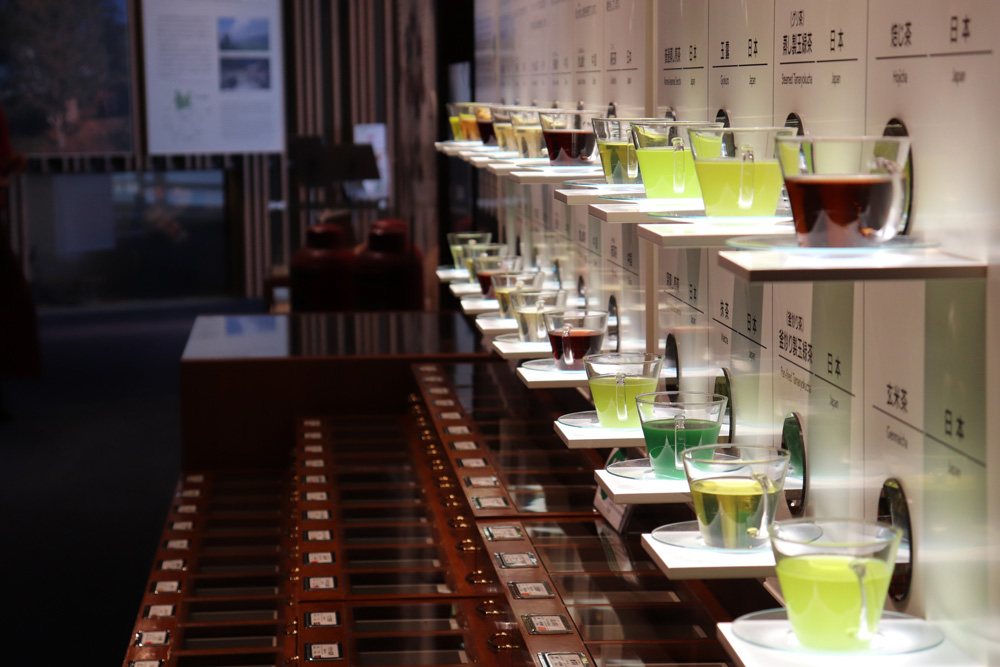
The Shizuoka tea industry began with tea seeds brought back from China by Shoichi Kokushi during the Kamakura period (1185-1333). With the large-scale cultivation of tea plantations after the Meiji Restoration, the Makinohara Plateau in Shizuoka Prefecture became a major tea-producing region supporting Japanese tea, and has contributed greatly to the development of the tea industry ever since. In March 2018, the Fujinokuni Tea Museum opened there.In addition to hands-on activities such as tea picking, hand rubbing, matcha grinding, and tea ceremonies, the museum offers a Japanese garden, café restaurant, store, and permanent exhibition where visitors can learn about the origins of the tea industry, as well as a wide variety of other contents for year-round enjoyment.
This article will introduce the fascinating facilities at Fujinokuni Tea Museum.
Contents
- 1 About the Fujinokuni Tea Museum, Shizuoka
- 2 A museum packed with hands-on activities.
- 3 Cafe-restaurant Maruobara, where you can enjoy Shizuoka tea
- 4 The Museum Shop offers everything from tea sweets to tea perfumes.
- 5 Makinohara Tea Terrace Experience
- 6 Permanent exhibition of teas from around the world.
- 7 Hand rolling tea workshop
- 8 Elegantly decorated Japanese garden and tea house
- 9 Information of Fujinokuni Tea Museum, Shizuoka
About the Fujinokuni Tea Museum, Shizuoka
The Fujinokuni Tea Museum is a museum specializing in tea located on the Makinohara Plateau, a large tea production area in Shizuoka Prefecture.
Originally the Shimada City Museum of Tea, it was renovated and reopened on March 24, 2018. It has been transformed into a tea museum with a variety of exhibits including permanent exhibitions, a tea house, garden, and business center.
Every year during the tea season in April and May, growers are forced to reduce events and other activities due to the busy harvest season, but Fujinokuni Tea Museum holds seminars and events all year round. For more information, please visit the official website.
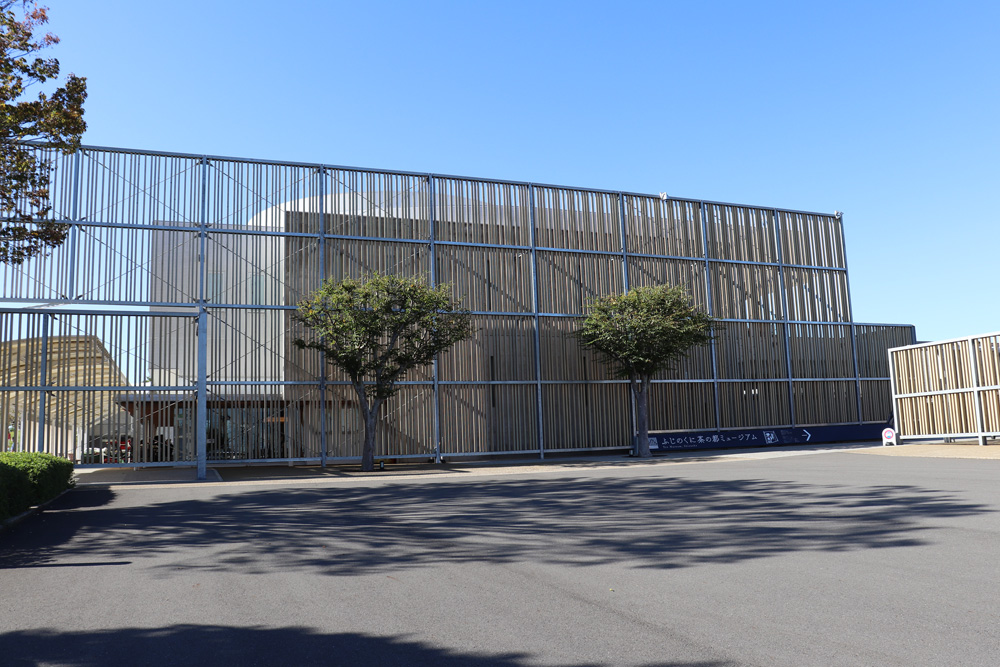 ▲The exterior of the building, surrounded by a vortex design, is based on the logo of the Tea Museum. The lumber used is cypress grown in Shizuoka Prefecture.▼
▲The exterior of the building, surrounded by a vortex design, is based on the logo of the Tea Museum. The lumber used is cypress grown in Shizuoka Prefecture.▼

As you head toward the entrance, you are greeted by a beautiful contemporary-style courtyard designed by renowned garden designer Kazuyuki Ishihara. With the courtyard in front of you, the tea ceremony room and Japanese garden on your right, and the museum on your left.
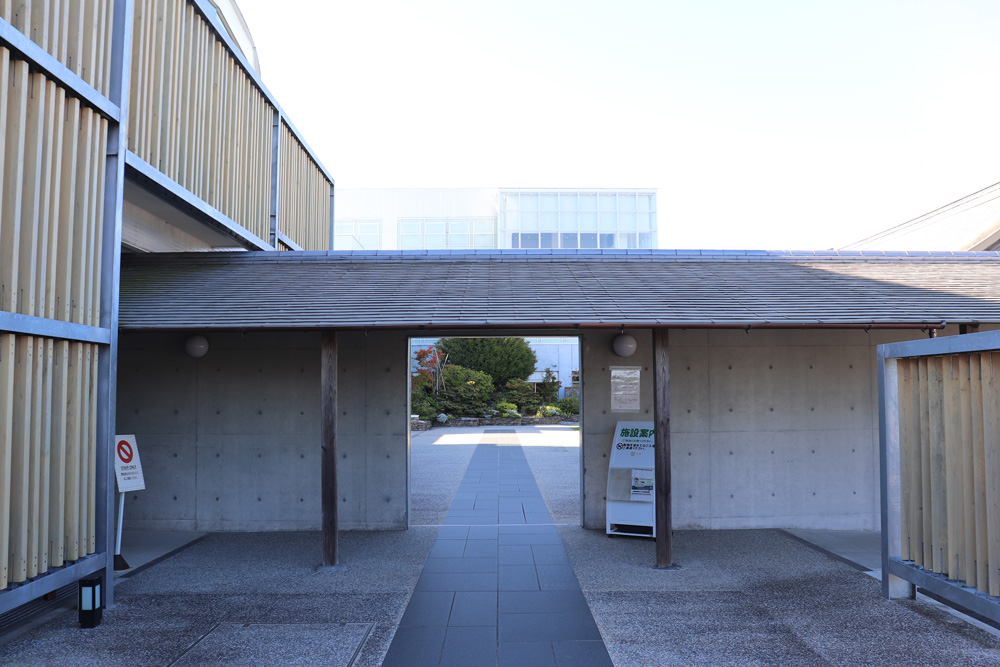
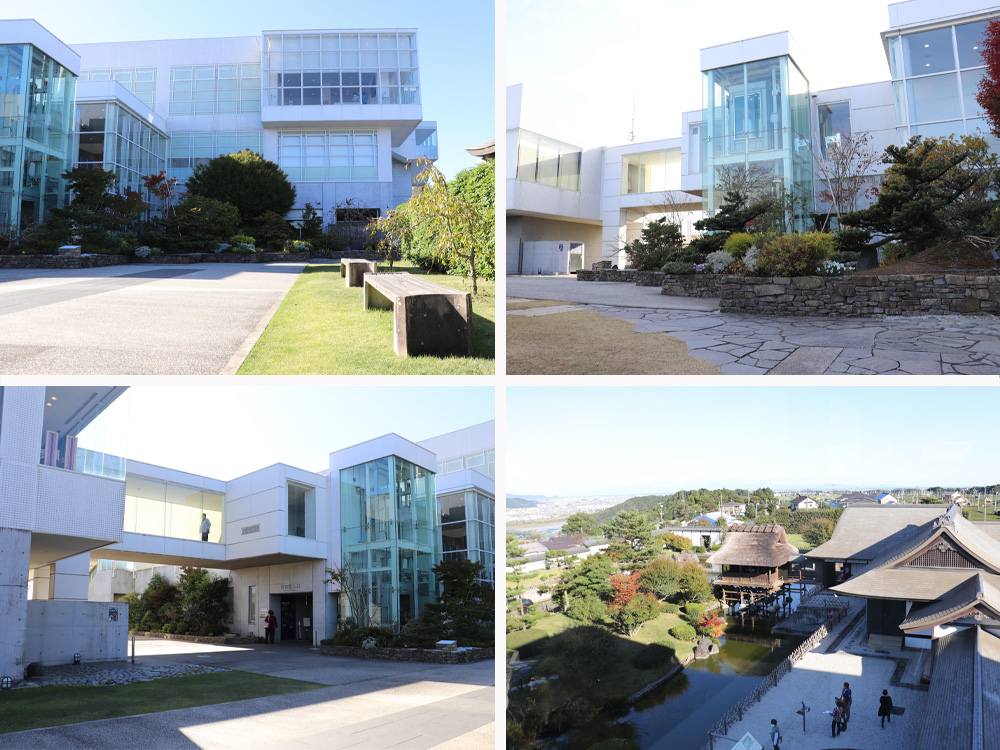
A museum packed with hands-on activities.
The museum offers a variety of hands-on activities such as tea picking, hand rubbing, matcha grinding, and tea ceremony, as well as exhibits on the industry, history, and culture of tea.
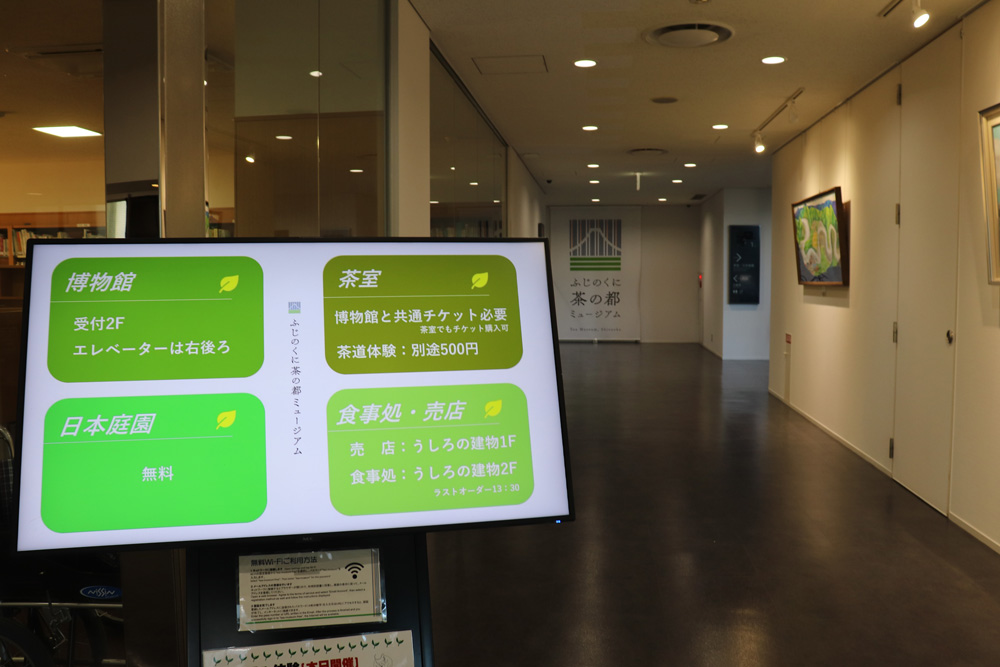
The library on the first floor contains a wealth of materials on the history, culture, and industry of tea.
 ▲All of these are resources on tea.These books are not available for loan.▼
▲All of these are resources on tea.These books are not available for loan.▼
On the second floor, you can register for various seminars and events. Continue to the third floor, and you will find the open-air Mt. Fuji Observation Hall, where Shizuoka tea is served.
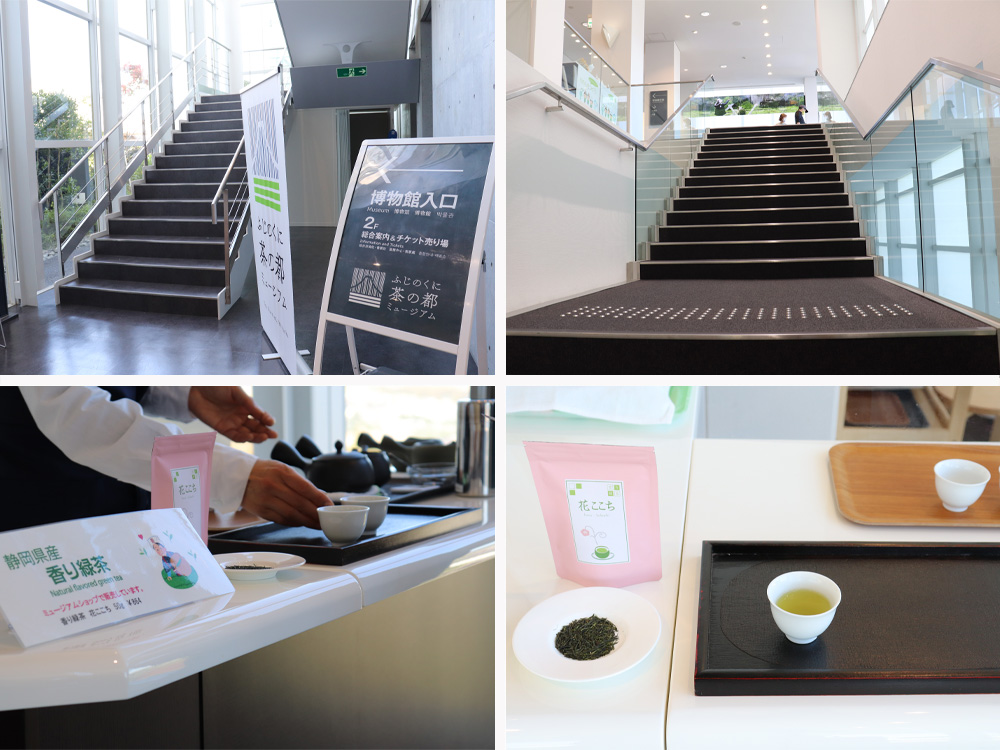
Enjoy a welcome tea with a view of beautiful Mt. Fuji beyond the large opening windows.
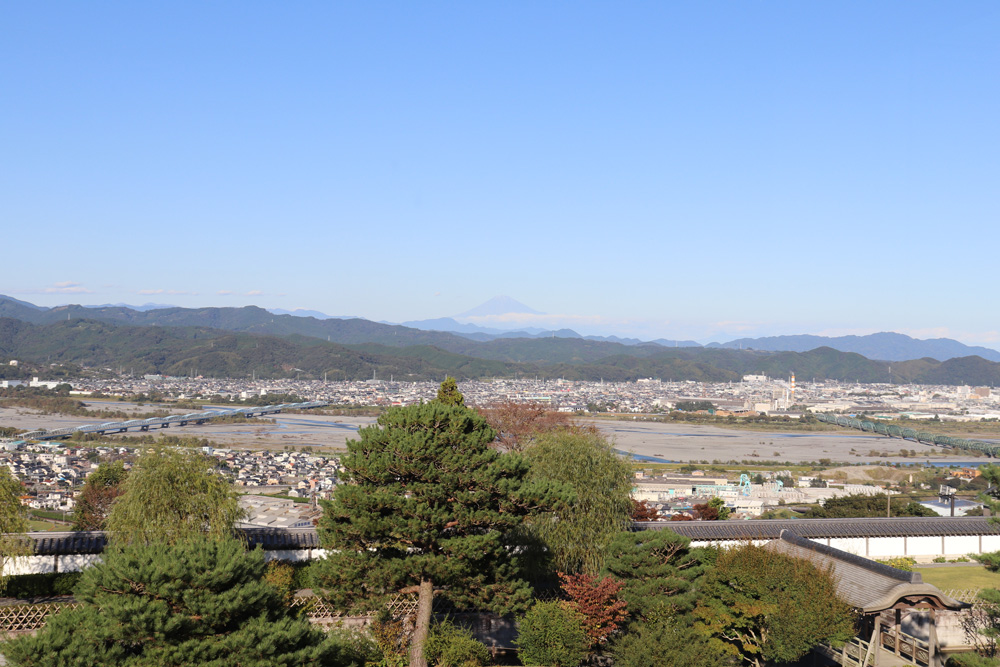
Cafe-restaurant Maruobara, where you can enjoy Shizuoka tea
Maruobara Cafe-Restaurant, located on the grounds of the Fujinokuni Tea Museum, offers tea sweets, tea kaiseki cuisine, and Shizuoka tea drinking contests. (Last order at 13:00, closing at 14:00)
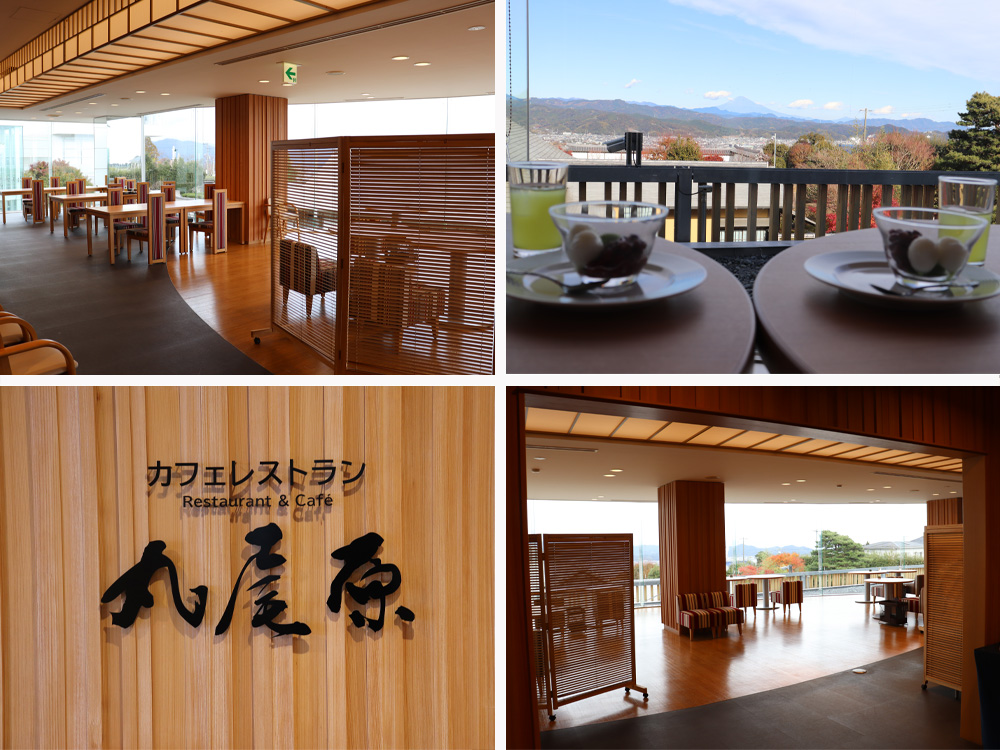
Zaru Soba (with mini Kakuni-don)
The matcha green tea buckwheat noodles kneaded with plenty of matcha green tea is a Maruobara original. The rice bowl topped with hojicha (roasted green tea), aromatic wasabi (wasabi produced in Shizuoka Prefecture) and tender kaku-ni (sweetened pork cubes) is also a satisfying meal.
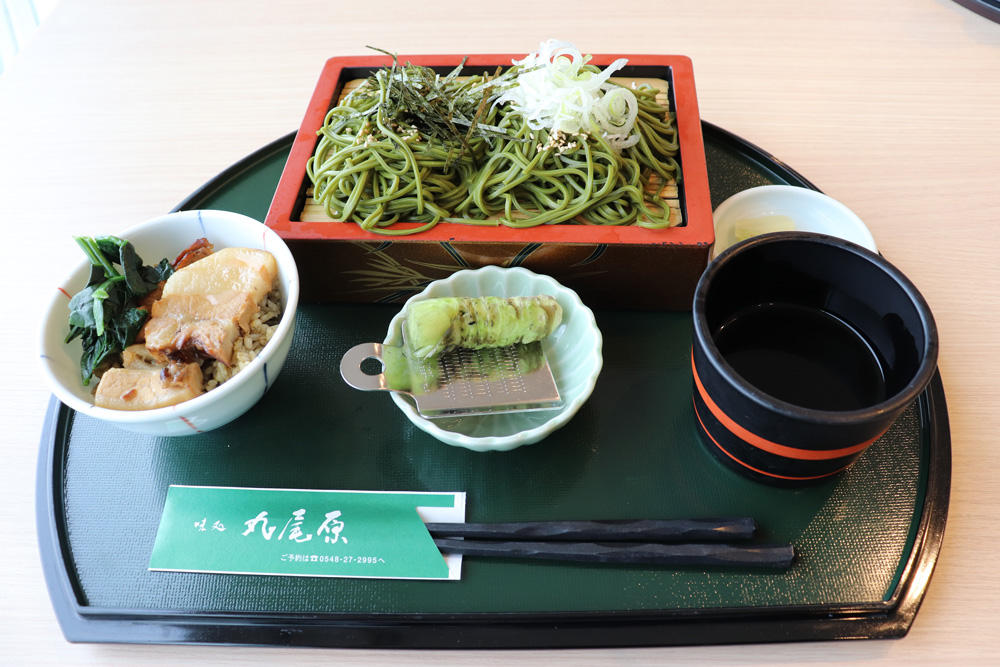
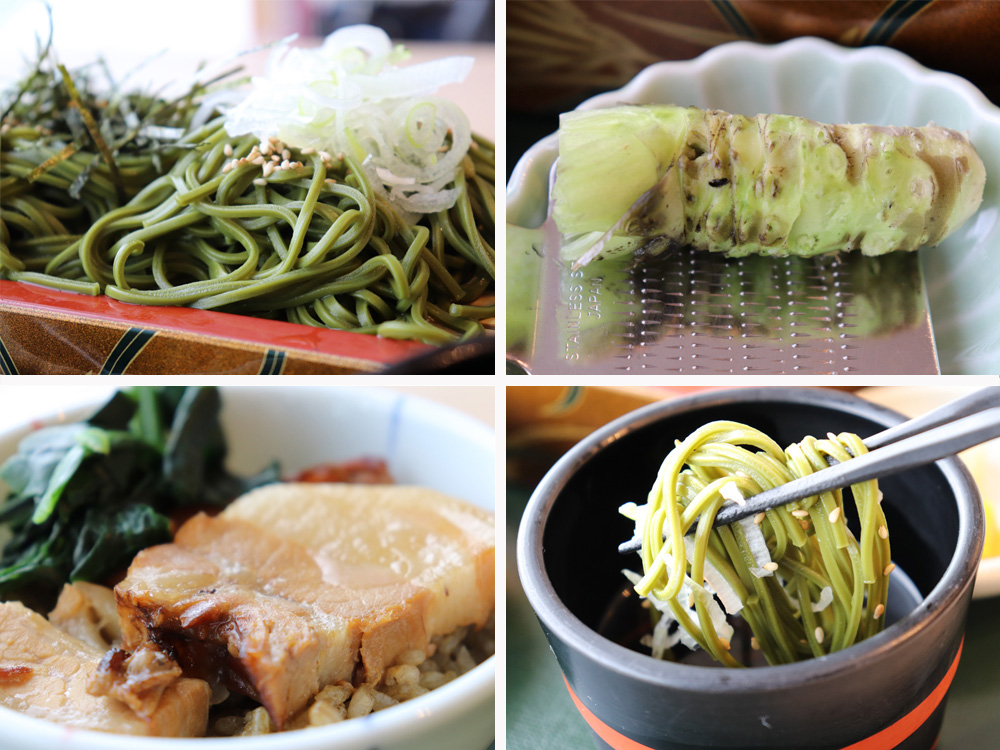
Futaroro Chameshi Tororo
This set includes two kinds of rice gently surrounded by tororo, Shizuoka pork stew and soup. The tororo rice is served with a spicy sauce, which can be enjoyed as it is at first, and later with the sauce for a different taste.
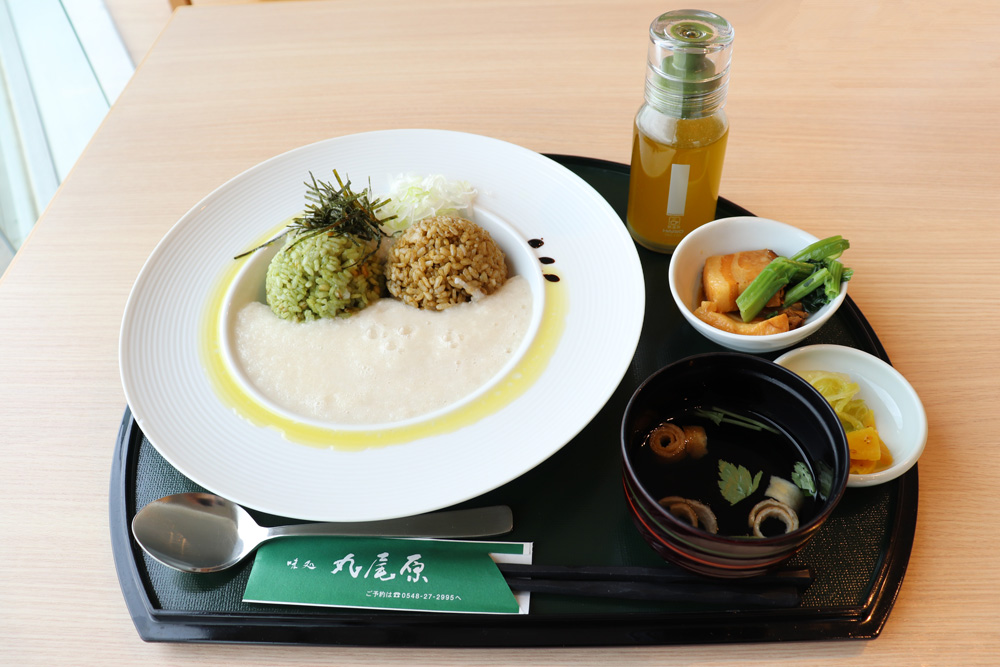
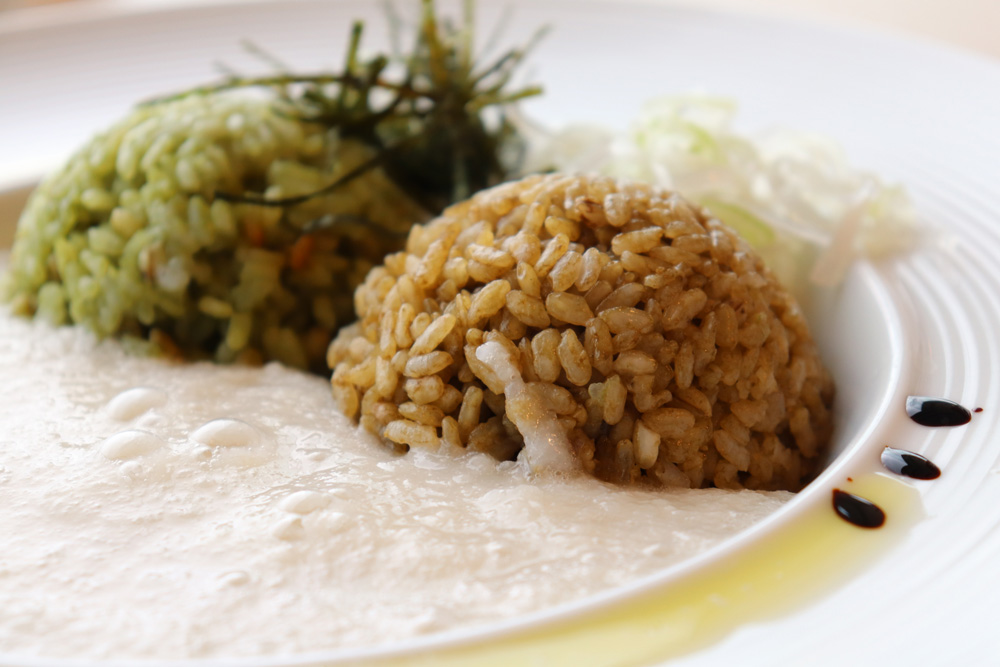
Matcha Shiratama
A tea sweet with shiratama (white bean curd) and azuki beans served with the world’s thickest matcha gelato, the No. 3 from the famous Nanaya.
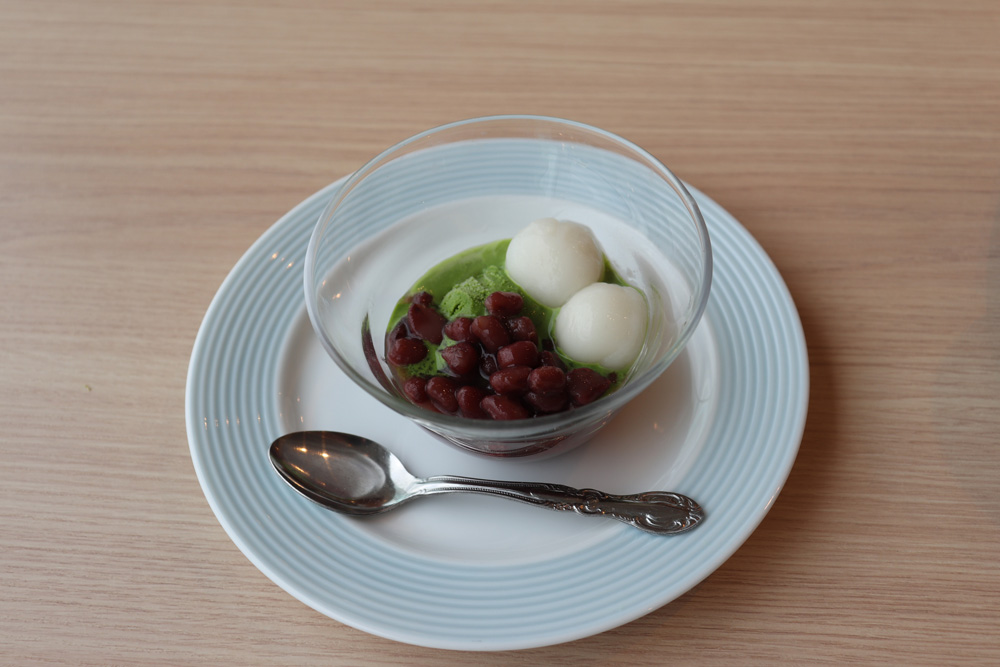

Tea tasting Japanese style!
A set of three types of tea brewed in a kyusu (Japanese teapot) to taste and savor. The teas offered this time were Tsuyu-hikari, Hana-kokochi, and Gyokuro. You will be surprised to find that even the same green tea has a completely different taste based on the way it is brewed. The waiter will carefully instruct you on the detailed brewing process, so those unfamiliar with tea can order with confidence.
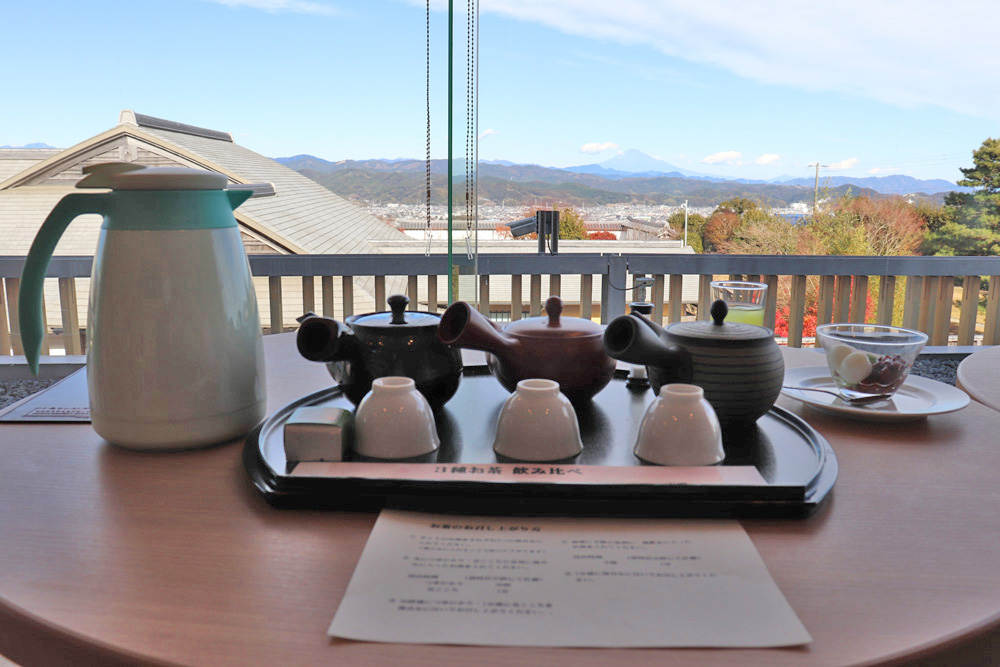
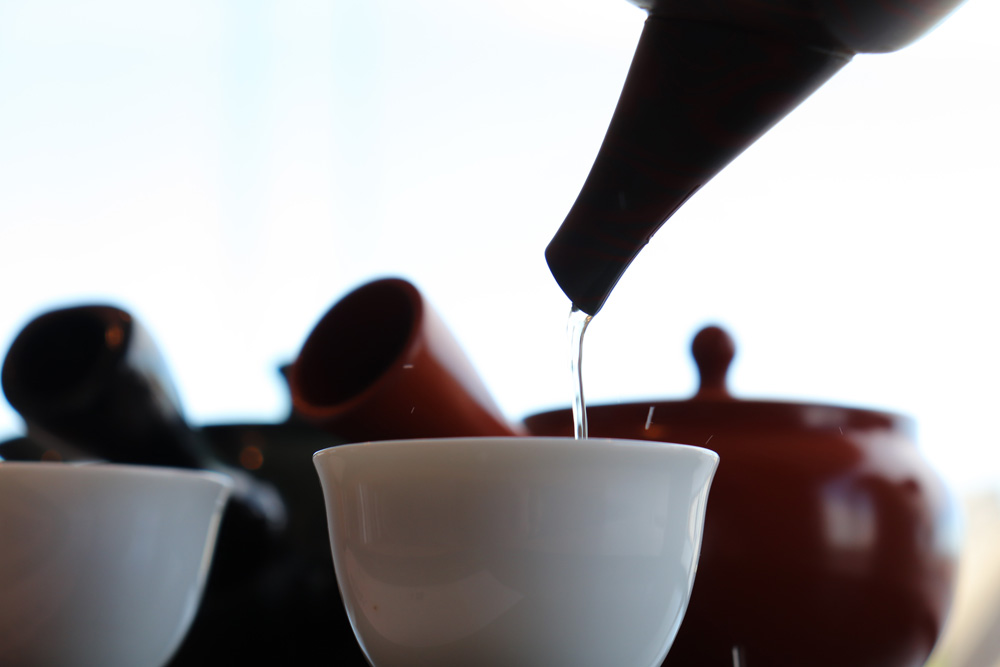
By ordering tea with sweet dishes, you can enjoy various combinations of tea pairings. If the weather is good, you can enjoy your meal while gazing at Mt. Fuji. It is also recommended as a date spot for couples.
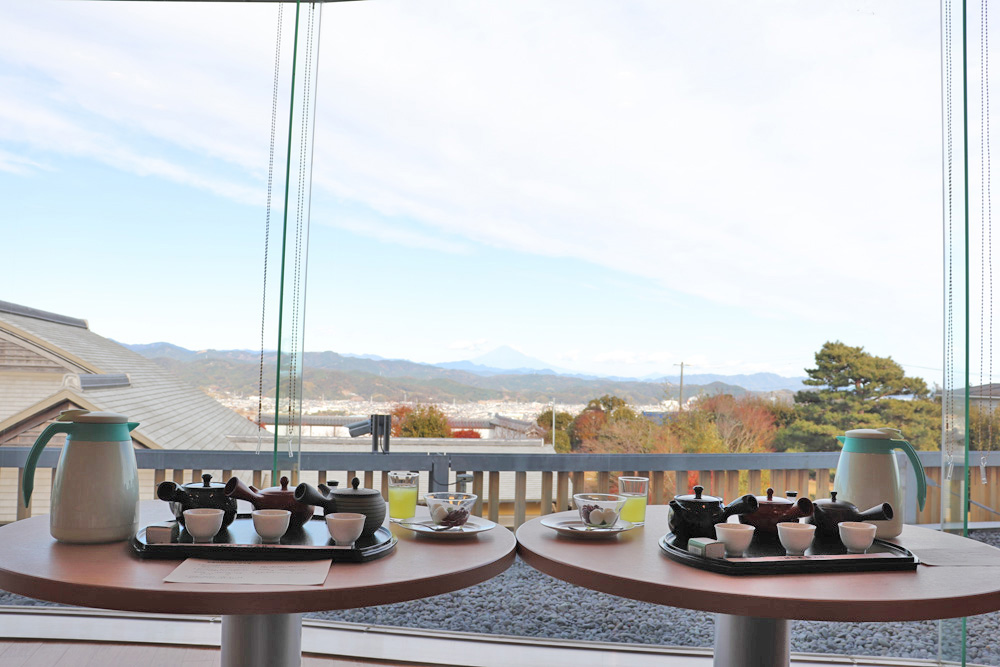
The Museum Shop offers everything from tea sweets to tea perfumes.
At the museum store, you can purchase a variety of domestic and international tea leaves, tea sweets, and tea utensils.
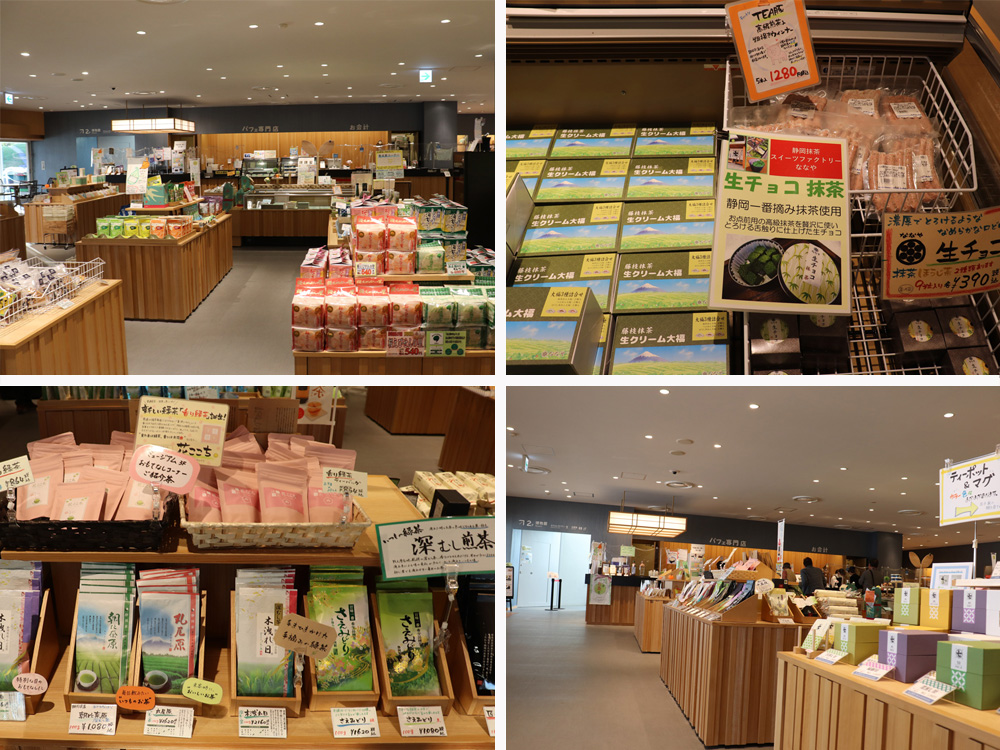
One of the most eye-catching items in the store is the “Aroma Parfum Green Tea World Series,” a natural aromatic perfume created using Shizuoka tea leaves.
Perfumer Natsuki Ota blends natural green tea aroma essence extracted from Shizuoka tea leaves with fragrances from around the world to create her acclaimed natural aromatic perfumes. Just trying a sample of the fragrance is an enjoyable experience.
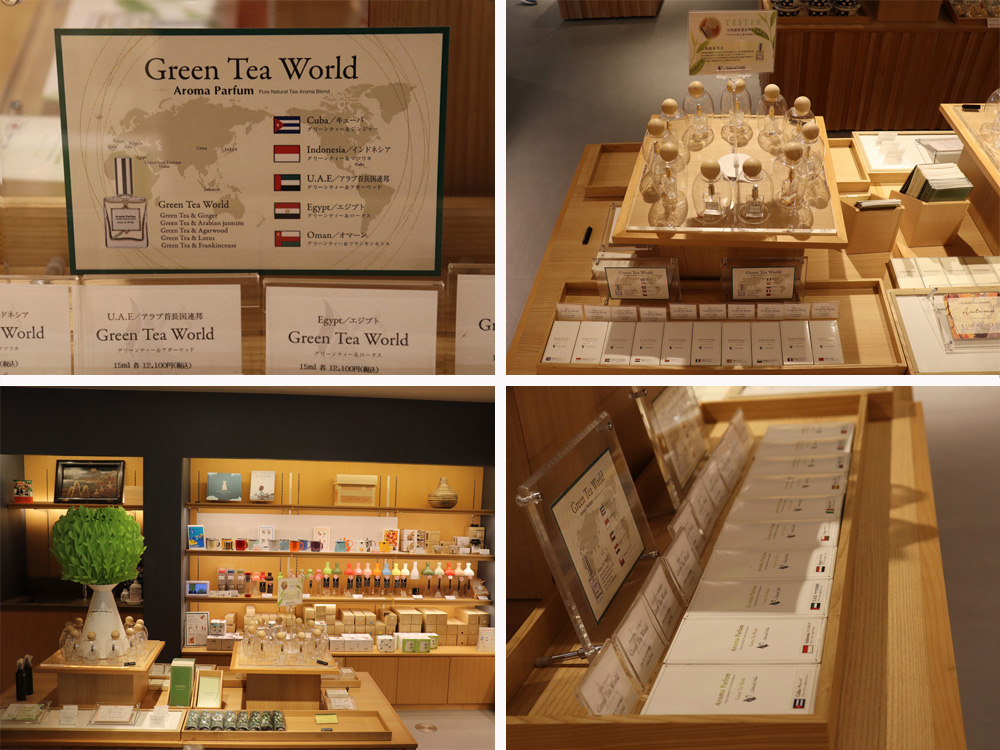
Rare hand-rubbed tea “Kiwame” by Mr. Toshihiro Hirayanagi, the owner of Yamahiraen, who is the president of the National Hand-Rubbed Tea Association, is also available for purchase.
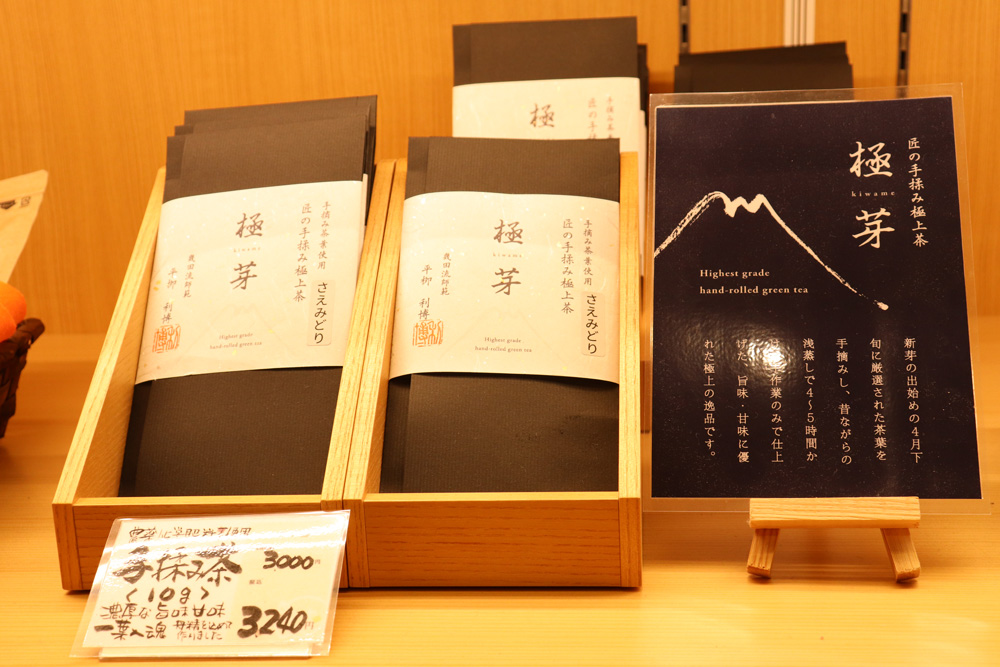
There is an eat-in space in the store, so after shopping, why not enjoy some tea sweets or bottled tea?
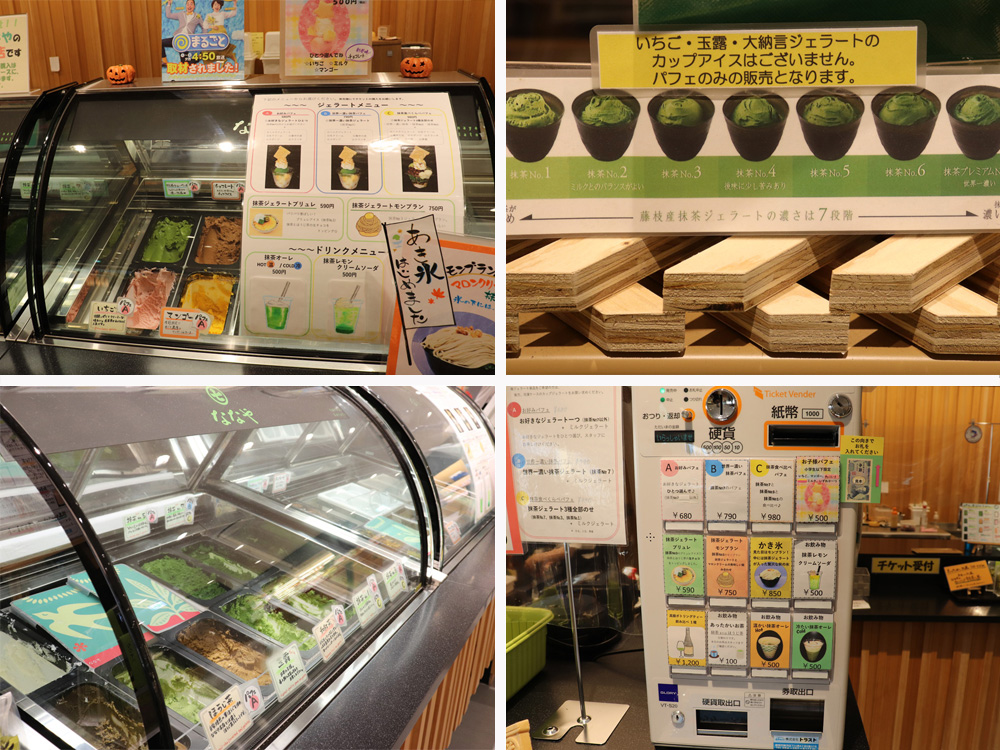 ▲ Purchase tickets from a ticket machine and order at the counter.
▲ Purchase tickets from a ticket machine and order at the counter.
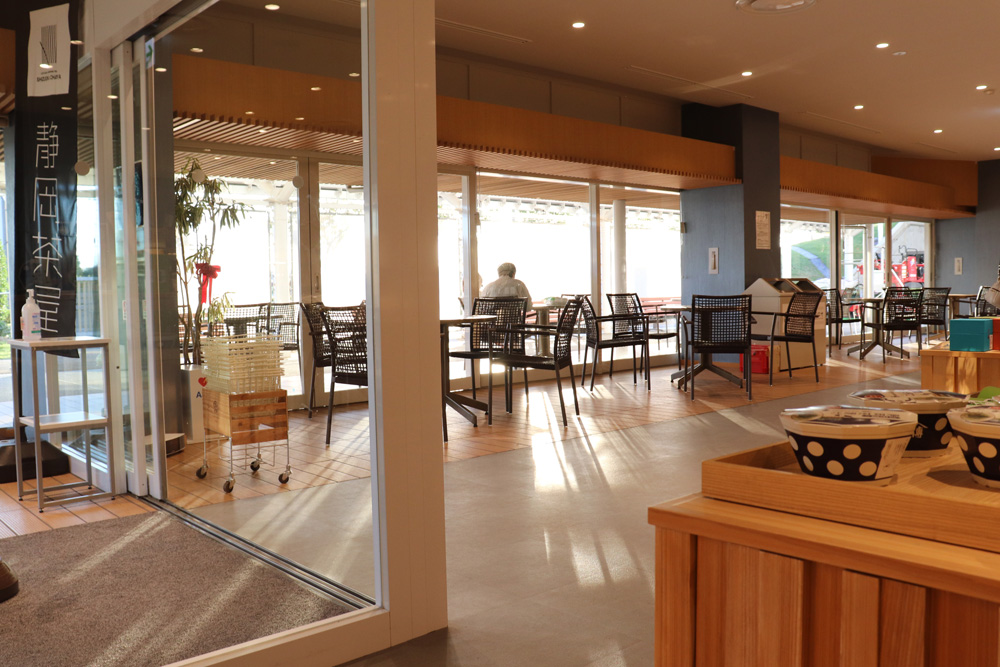
Matcha Tasting Parfait
A parfait featuring three types of matcha gelato: Nanaya’s thickest matcha gelato (No. 7), standard matcha gelato (No. 3), and fragrant matcha gelato (No. 1). The parfait is also decorated with a wide variety of other sweet delicacies, including milk gelato, whipped cream, sponge, crunchy flakes, monaka skin, shiratama (white bean curd), azuki beans, and kuromitsu (brown sugar). This special sweet is satisfying in both content and quantity.
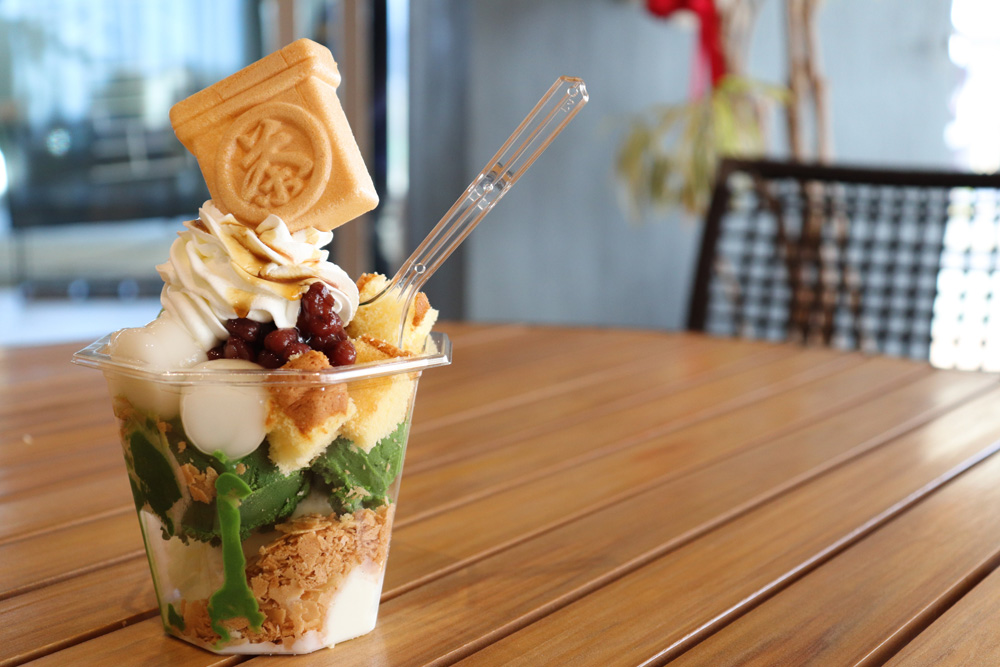
Matcha Gelato Mont Blanc
The combination of NO3 matcha gelato and marron cream is exquisite. When you see the matcha gelato under the marron cream, you will be excited to try this dish.
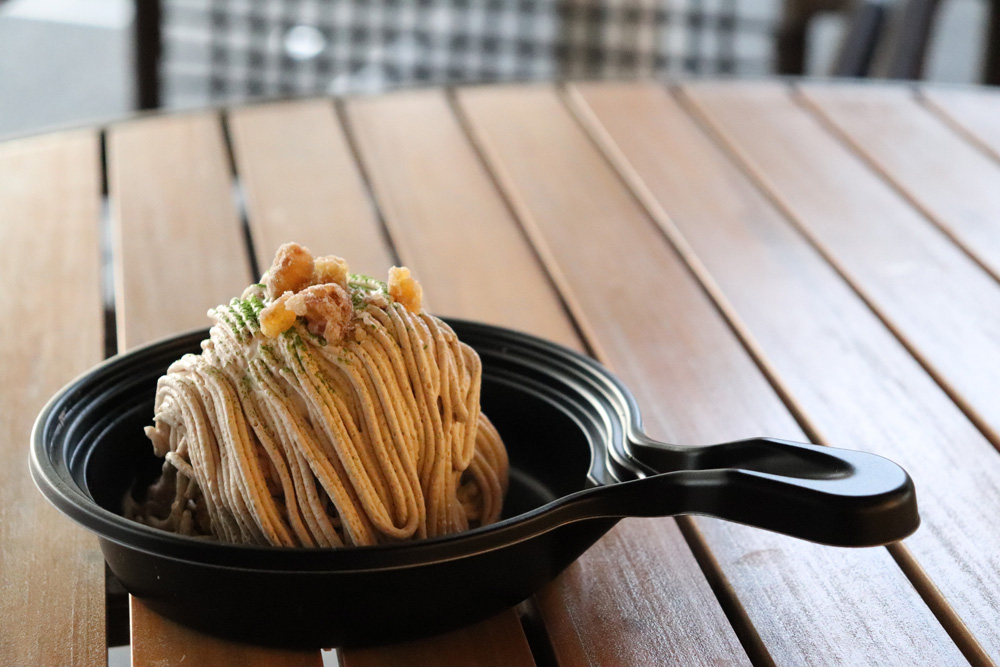
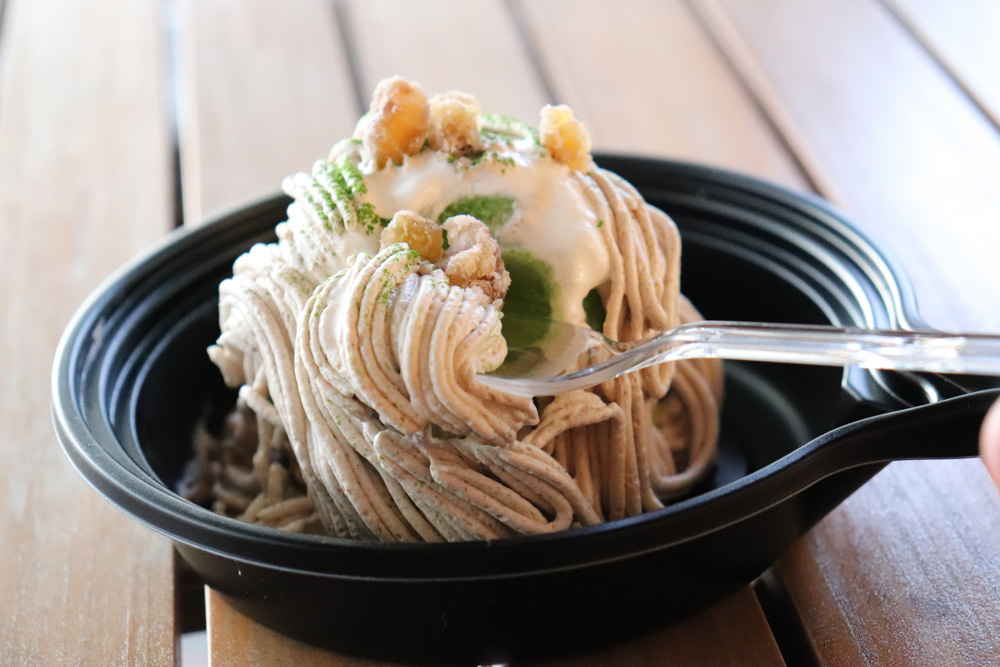
Bottled tea tasting (CRFT BREW TEA)
CRFT BREW TEA is a bottled tea maker newly launched by Marushichi Seicha with the concept of making it easy for anyone to drink delicious tea anytime, anywhere.
Three kinds of bottled tea filled with kyusu brewed teas are enjoyed elegantly in a wine glass.
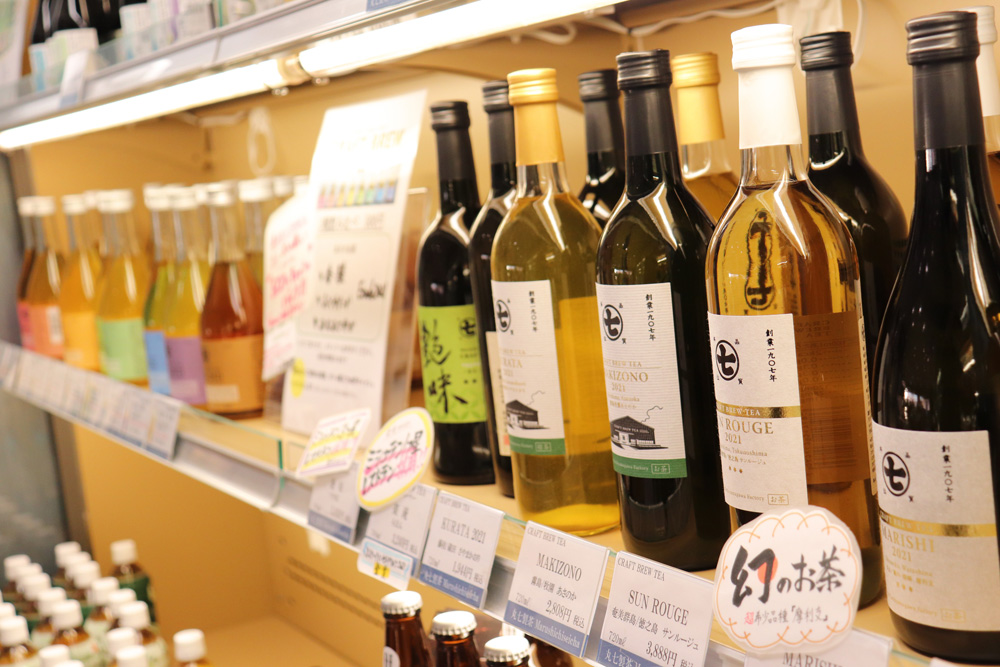
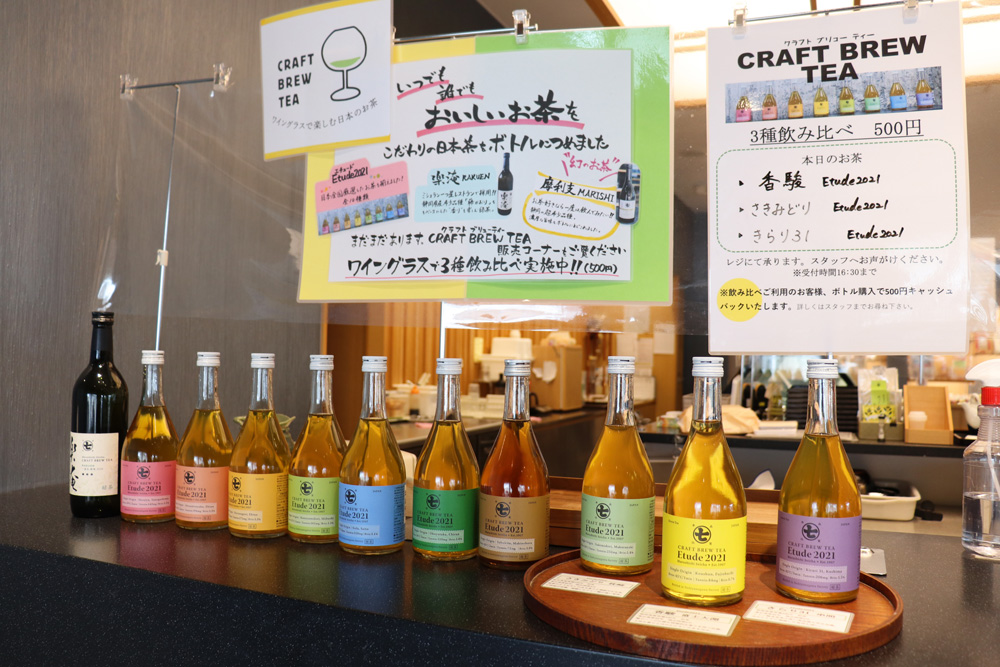
The type of bottled tea offered changes daily. On this particular day, we had Kirari 31 from Miyazaki, Saki Midori Makurazaki from Kagoshima, and Koushun Fuji-Obuchi from Shizuoka.
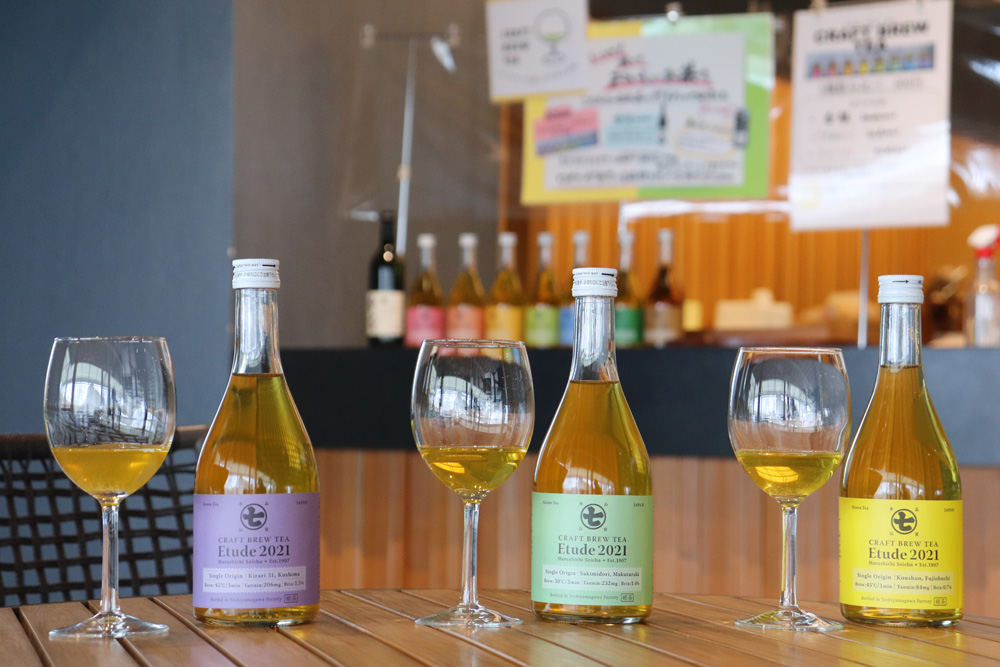
Makinohara Tea Terrace Experience
Visitors can enjoy the terrace at the Makinohara Grand Tea Garden Observation Terrace on the third floor of the Fujinokuni Tea Museum.
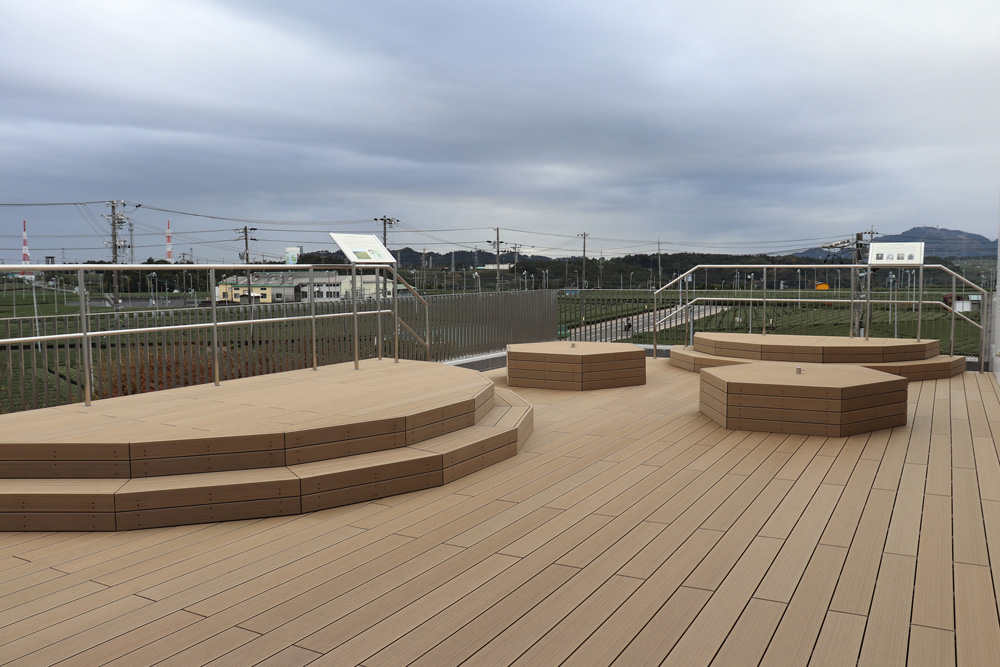
After applying for the tea terrace experience at the general information desk on the second floor of the museum, purchase a ticket from the ticketing machine.
Choose from two courses:
Basket type: A course to enjoy tea in a picnic atmosphere with a basket filled with tea utensils, tea, and sweets.
Wine glass type: Enjoy high-class bottled tea in a wine glass.
The basket type has a heart mark on the teapot, the sweets are the large sand dunes of Sasukien, and other small contrivances are delightful.


This terrace on the south side of the museum is about 118 square meters. Enjoy a relaxing moment on the spacious terrace with a view of the large garden.
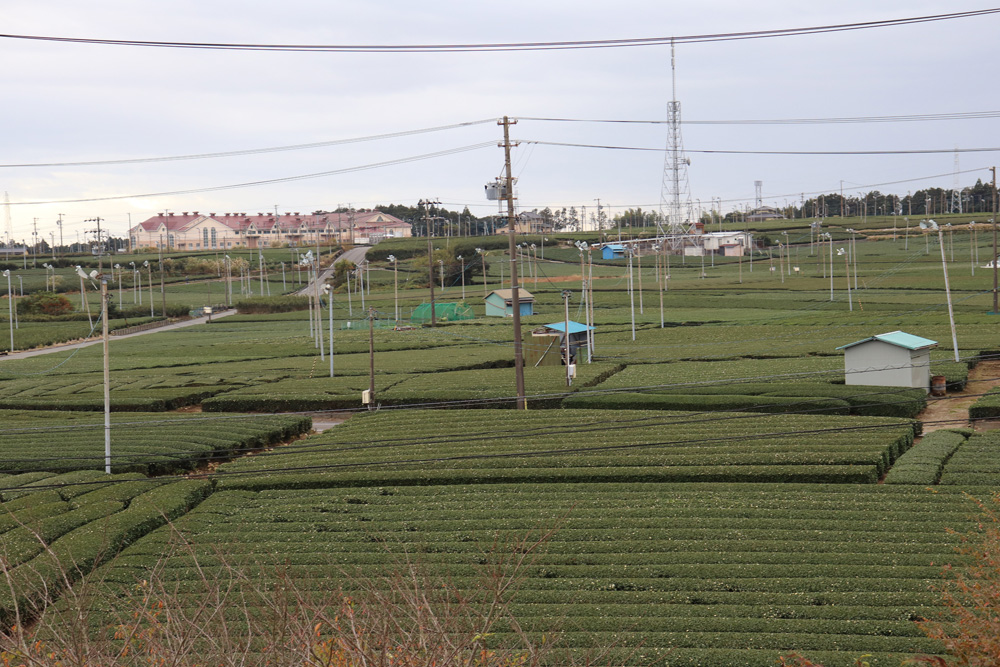
Permanent exhibition of teas from around the world.
The word “tea” covers a diverse and wide range of aromas, tastes, and colors. The permanent exhibition at Fujinokuni Tea Museum provides detailed information on tea from around the world, including knowledge, techniques, traditions, and history.
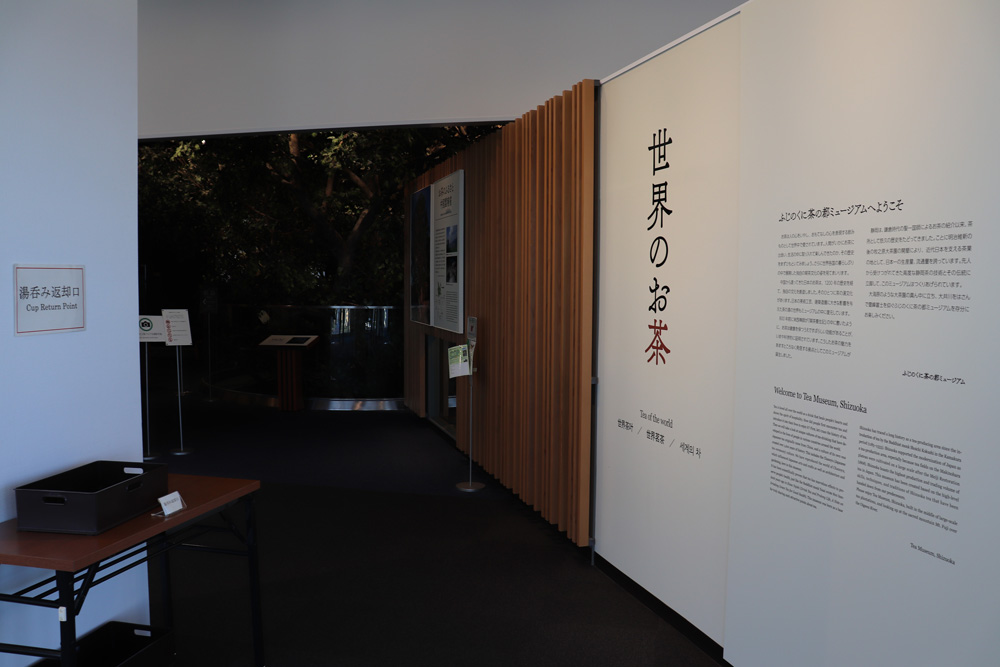
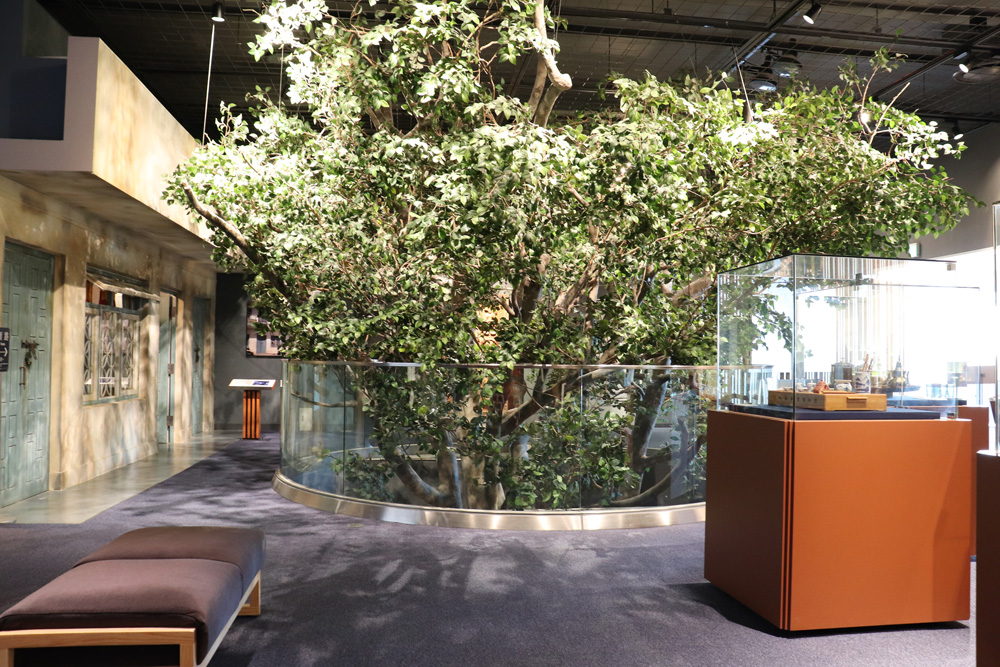 ▲In the center of the exhibition hall is a replica of the King of Tea Trees from Yunnan Province, China, which is believed to be the origin of tea. The tree is approximately 1,000 years old.
▲In the center of the exhibition hall is a replica of the King of Tea Trees from Yunnan Province, China, which is believed to be the origin of tea. The tree is approximately 1,000 years old.
The wall graphics introduce a variety of teas from around the world, from their water color, botanical characteristics, and production methods to the world’s tea culture.
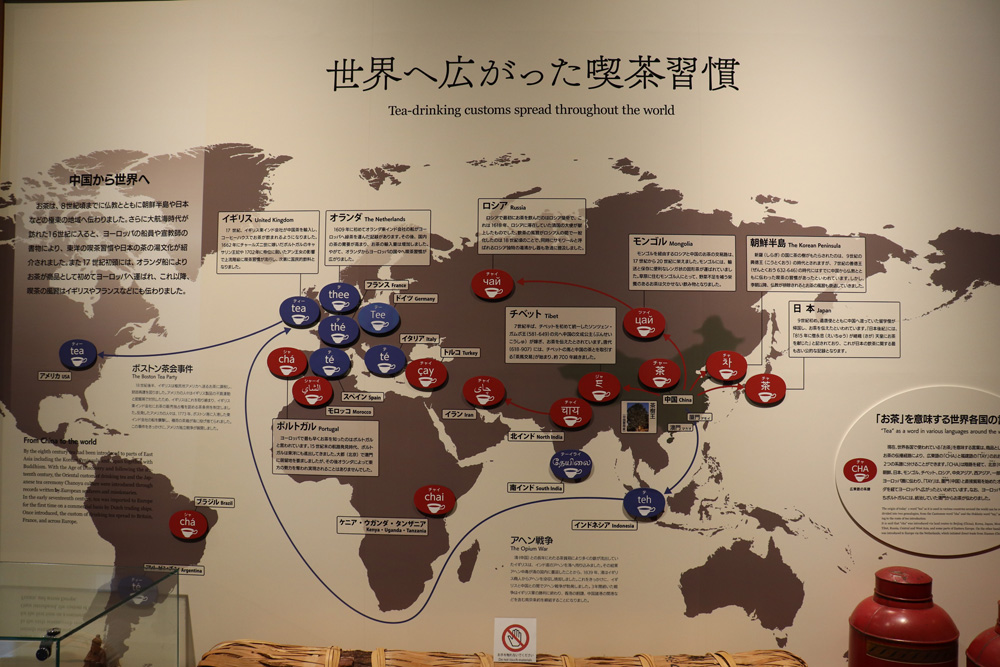
 ▲Visitors can actually touch the tea leaves and experience the smell and feel of the tea.
▲Visitors can actually touch the tea leaves and experience the smell and feel of the tea.
The realistic architecture that recreates cafe culture from around the world will make you feel as if you have been on holiday. In addition to the actual materials, there are also videos and demonstrations accompanying the exhibits that children and adults of all ages can enjoy.

The rest of the area is dedicated to exhibits on the techniques, history, and production areas of Japanese tea.
Hand rolling tea workshop
At the Fujinokuni Tea Museum, visitors can experience a part of the hand-rolling process under the guidance of an instructor from the Shizuoka Prefecture Hand-Rolled Tea Preservation Association.
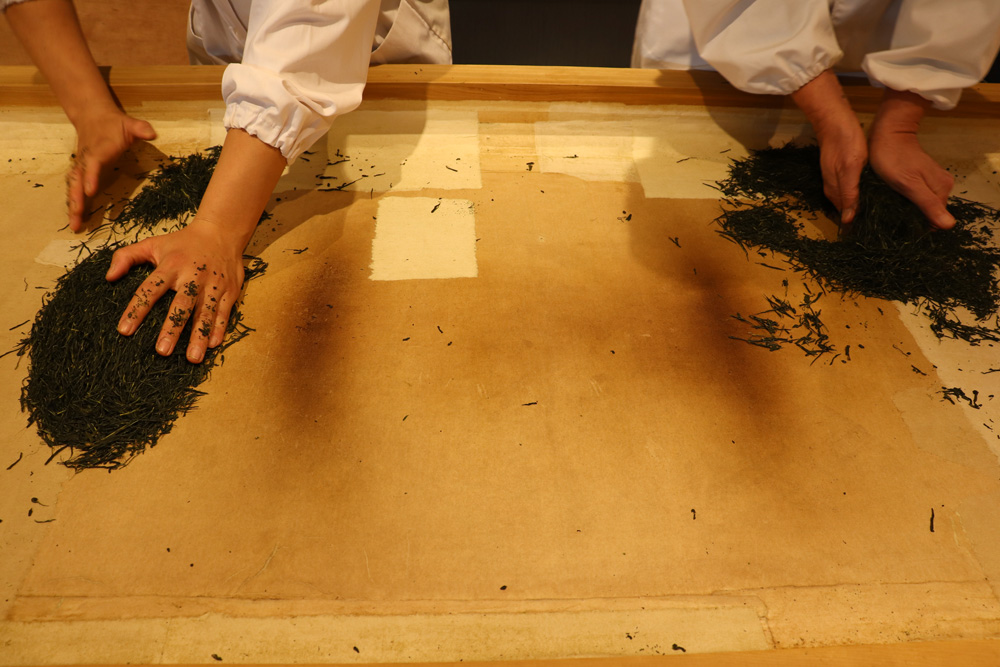
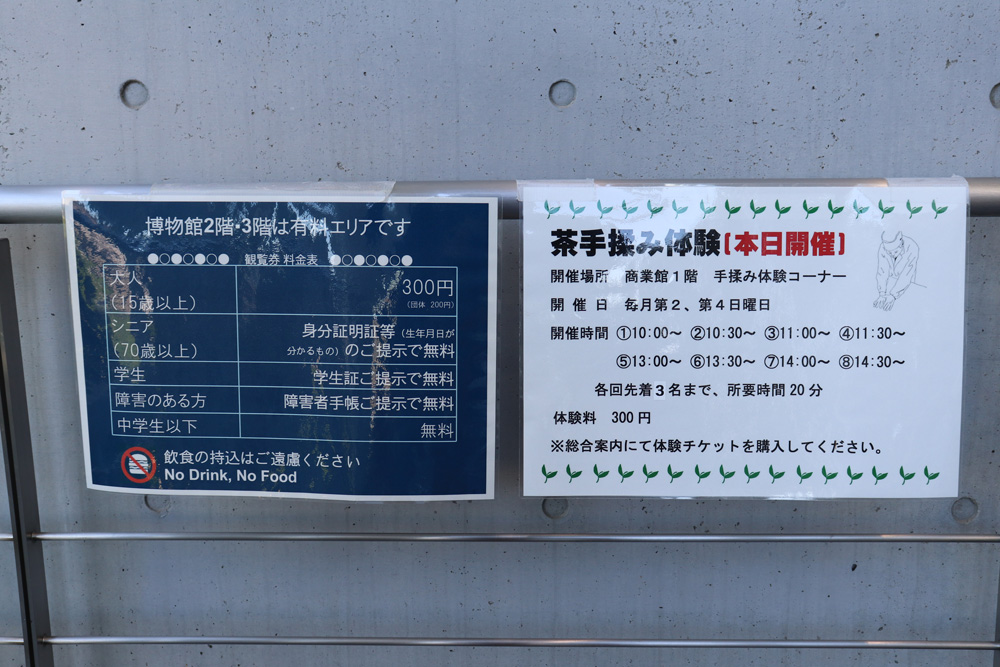 ▲You can purchase tickets in advance at the museum’s second-floor reception desk.
▲You can purchase tickets in advance at the museum’s second-floor reception desk.
Nowadays, tea-making machines are generally used in the process of rolling and finishing tea. However, in the past, tea was finished by hand by tea artisans. As the demand for tea increased, mechanization to reproduce the hand-rolling techniques progressed, and the artisans were replaced by tea-making machines.
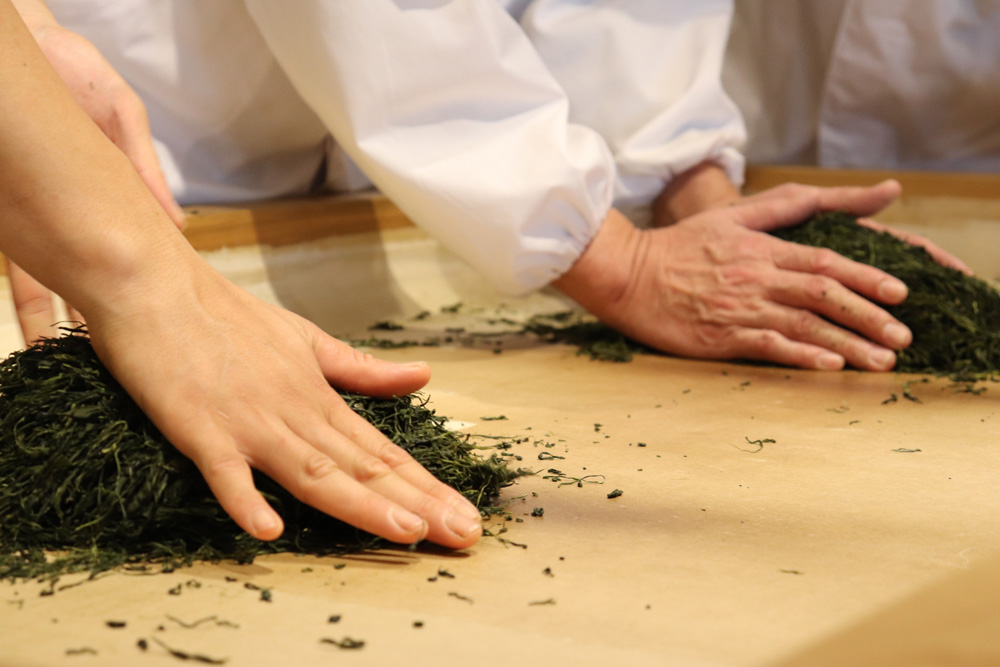
There are various schools of hand-rolling tea. Currently, there are eight hand-rolling schools in Shizuoka. There is an organization called the “Association for Preservation of Hand Rolled Tea,” which is responsible for handing down each school to future generations.
Of the 18 branches of the Shizuoka Hand-Roled Tea Preservation Society serves as an instructor on a rotating basis, and at this hands-on experience, you will receive instruction in the standard form of hand rolling.

The table used for hand-rolling is heated from below in order to remove water from the tea leaves, the heat and texture of the tea leaves as they are rubbed is very satisfying.
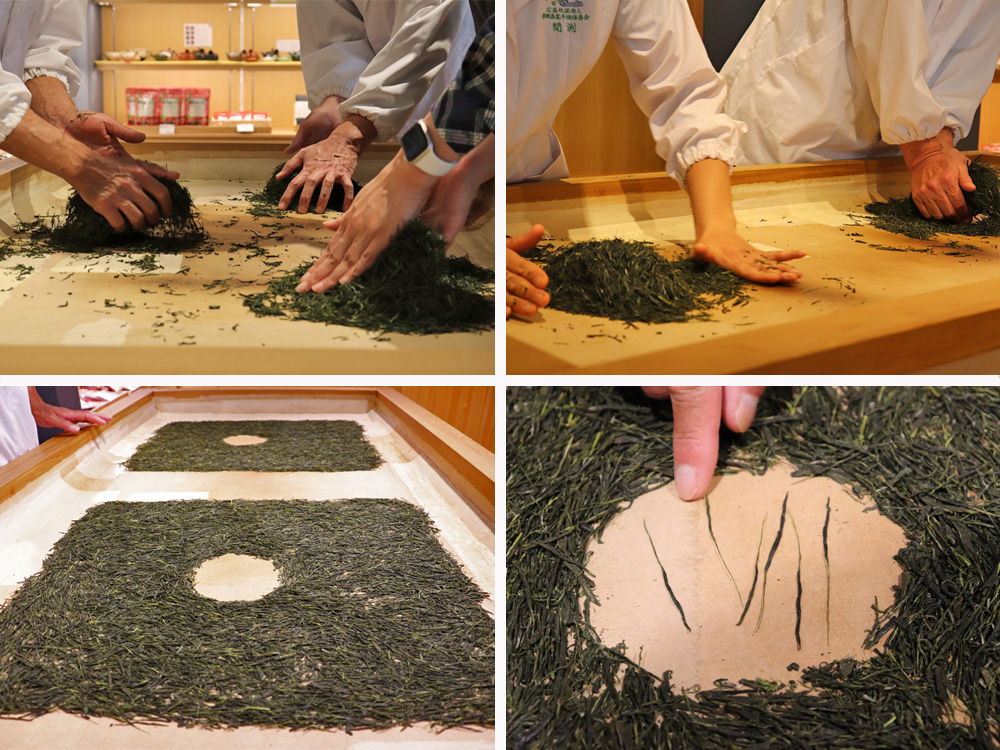
Elegantly decorated Japanese garden and tea house
The Japanese garden and tearooms at Fujinokuni Tea Museum recreate the world of “Kirei-Sabi” (a concept of beauty that combines the elegance of the imperial court and the grace of the early modern period with the concepts of Wabi and Sabi), which was established by Enshu Kobori.
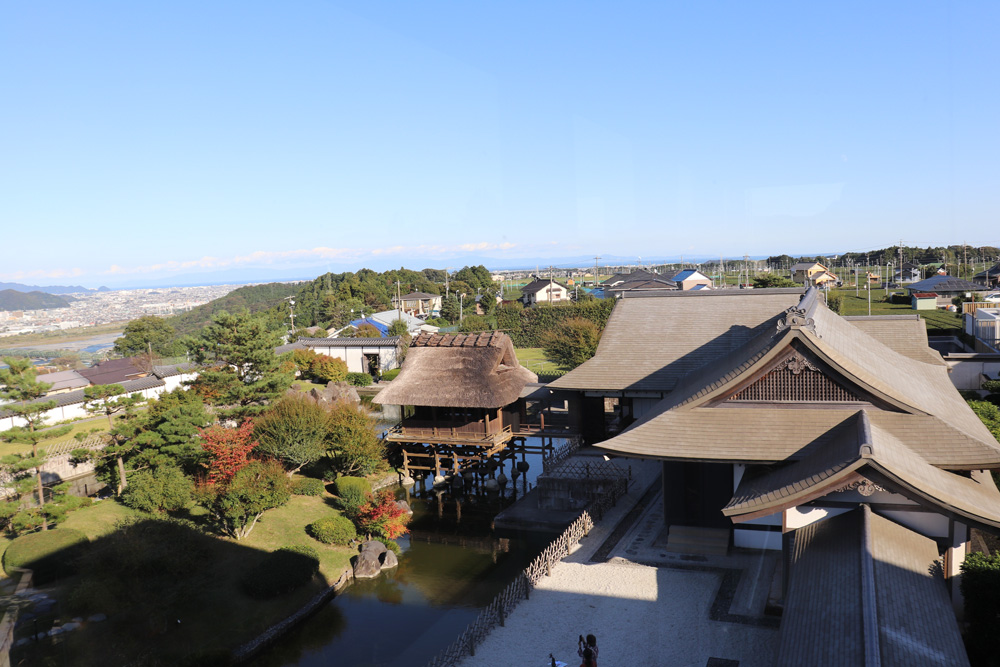
Visitors can learn about the origins and history of the beautiful designs, such as the shoji screens and carvings on the shelves, while listening to a detailed audio guide as they walk through the tearoom.
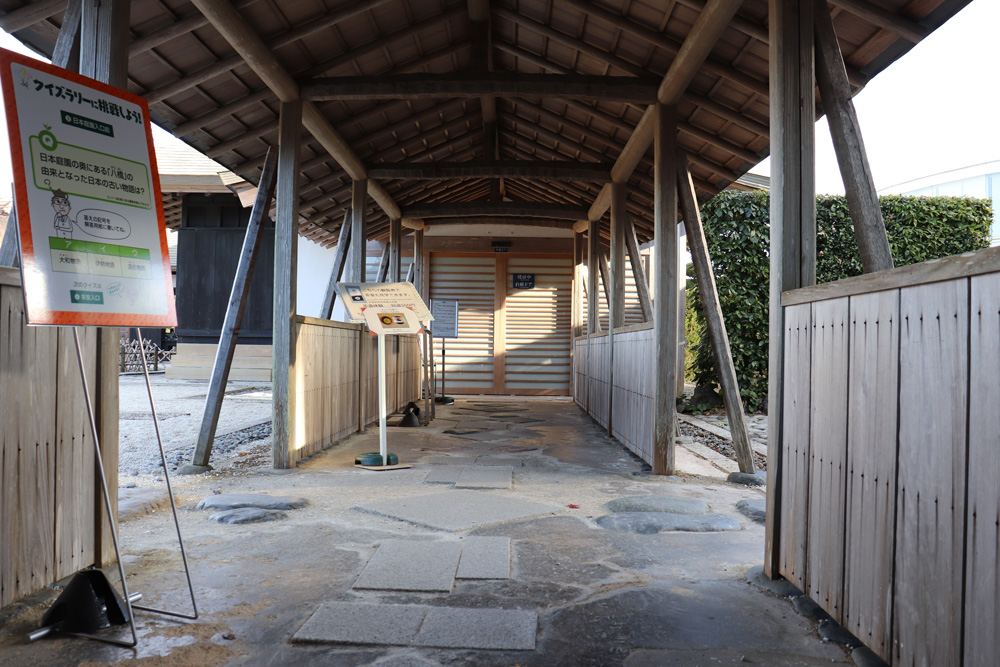
If you register in advance at the vending machine located at the entrance to the tea house, you can experience a tea ceremony in “Rinsuitei”.
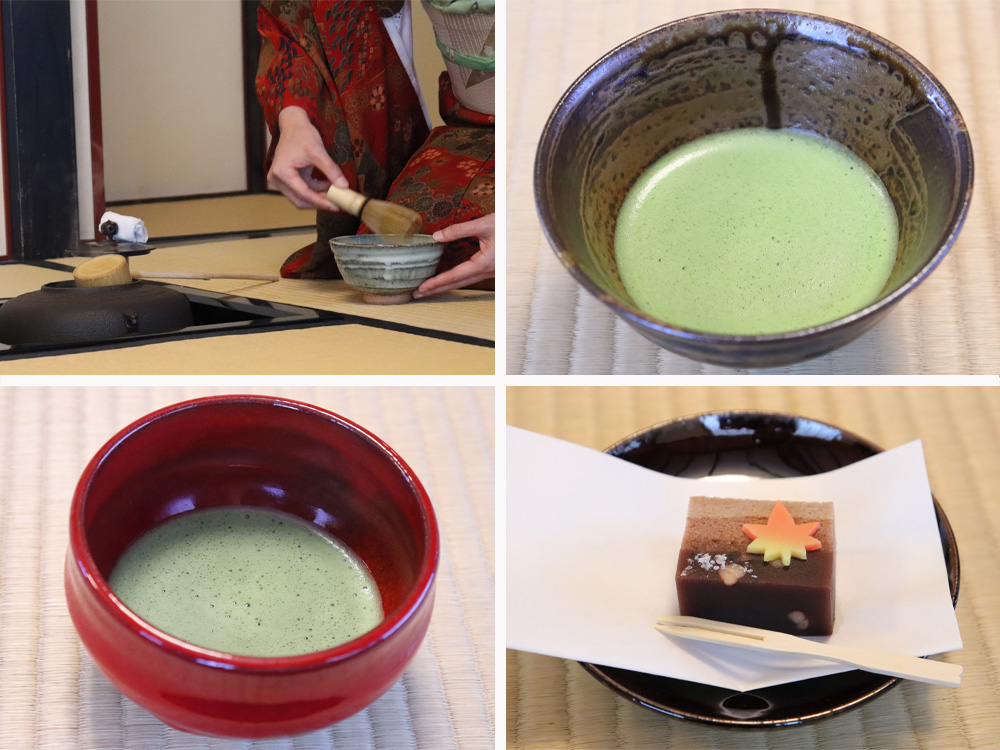
Since it may take some time to prepare for the tea ceremony, you may wish to visit the Shomokuro Tea House, the Kohokikyo Tea House, or the Japanese Garden.

The elegant scenery of Yatsuhashi Bridge, Shuhama Beach, Nakanoshima Island, ponds, and rocky mountains will soothe you.

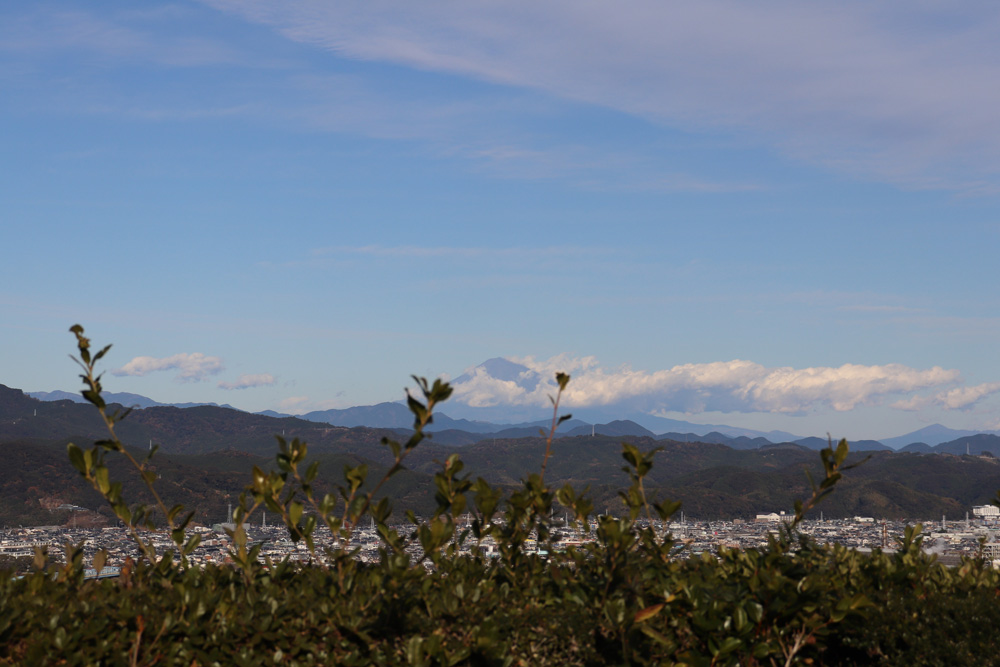 ▲From the Yatsuhashi bridge across the Chikuji moat, you can see Mt. Fuji.
▲From the Yatsuhashi bridge across the Chikuji moat, you can see Mt. Fuji.
Fujinokuni Tea Museum offers many tea ceremony experiences that we have not been able to introduce here. This is an enjoyable tea museum that is recommended not only for tea lovers, but also for people who are just a little bit interested in tea, families, and couples. Please visit the museum when you come to Shizuoka.
Recommended articles : Discover 5 Recommended Destinations for a Gourmet Lunch and the finest Japanese Green Tea!【Shizuoka Prefecture】
Recommended articles : Must-See for Matcha Lovers! Unique Feature on Top Matcha Sweets to Enjoy in Shizuoka, Japan’s Famous Tea Region
Information of Fujinokuni Tea Museum, Shizuoka
| Address | 3053-2 Fujimicho, Kanaya, Shimada City, Shizuoka Prefecture, 428-0034, Japan |
| Website | https://tea-museum.jp/ |
| Phone number | +81 547-46-5588 |
| E-money and credit cards | Available |
| Open | 9:00 a.m. to 5:00 p.m. (Admission until 4:30 p.m.) Admission is also 300 yen. Tearooms are open from 9:30 a.m. to 4:00 p.m. (Admission until 3:30 p.m.)Last order at the café-restaurant “Marubara” is 1:30 p.m. It closes at 2:00 p.m., so be sure to arrive early. |
| Closed | Tuesdays (if Tuesday is a national holiday, the museum will be open on Tuesday and closed the following day), Year-end and New Year holidays |
| Parking lot | Available |
| Access | 10 minutes by car from the Sagara Makinohara IC on the Tomei Expressway 10 minutes by car from the Shimada Kanaya IC of the New Tomei Expressway Approximately 10 minutes by car from the Ojiro IC of the Kunitachi Bypass |
| Writer | Norikazu Iwamoto |
| Career | Ochatimes chief editer. Meeting with Vice Governor of Shizuoka prefecture. Judge of Shizuoka 100 tea’s award in 2021~24. Ocha Times link introduced at website of World O-CHA(Tea) Festival 2022, Tea Science Center, The City of Green Tea Shizuoka, Ministry of Agriculture, Forestry and Fisheries. |
| English translator | Calfo Joshua |
| Career | Born and raised in England, living in Japan since 2016. Studying arboriculture in Shizuoka Prefecture whilst operating his landscape business Calfo Forestry. Appreciating the nature of Japan and the culture that places such importance in it. |


 Go to Japanese page
Go to Japanese page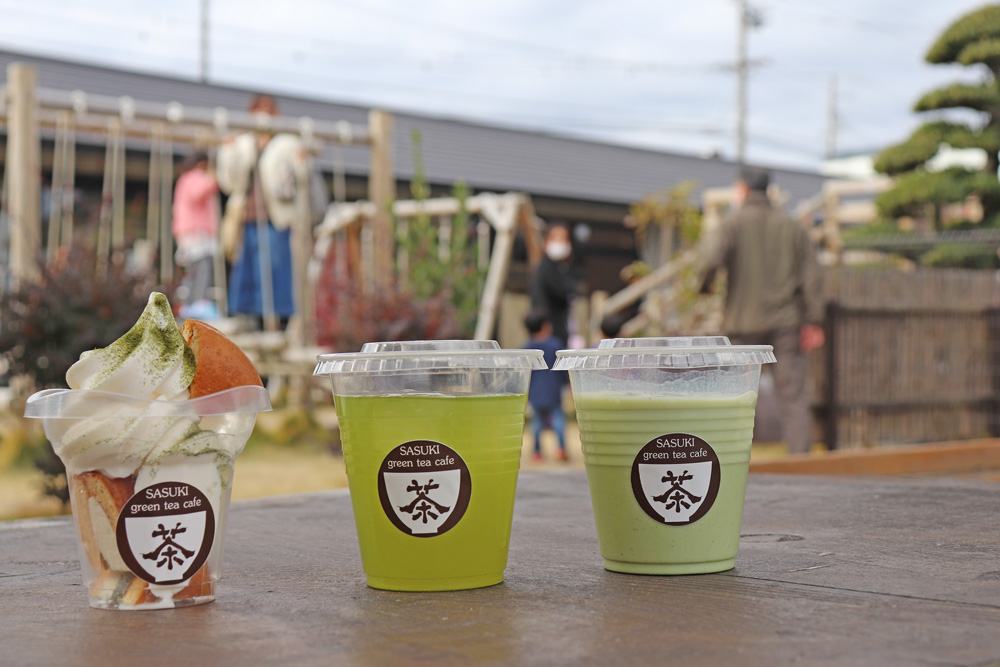
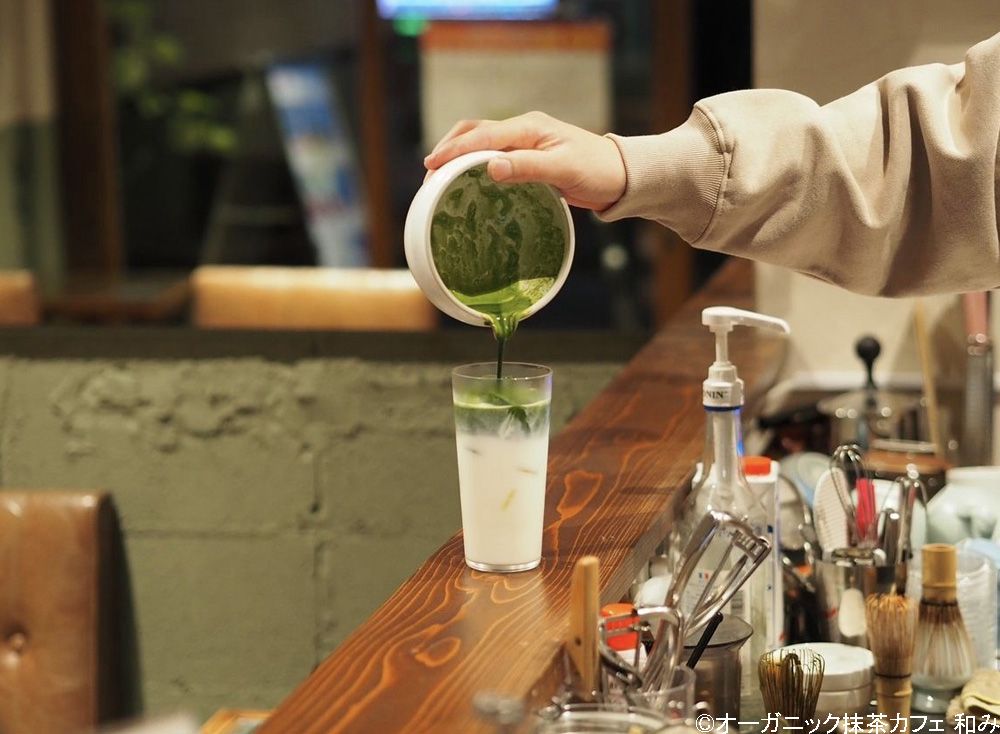
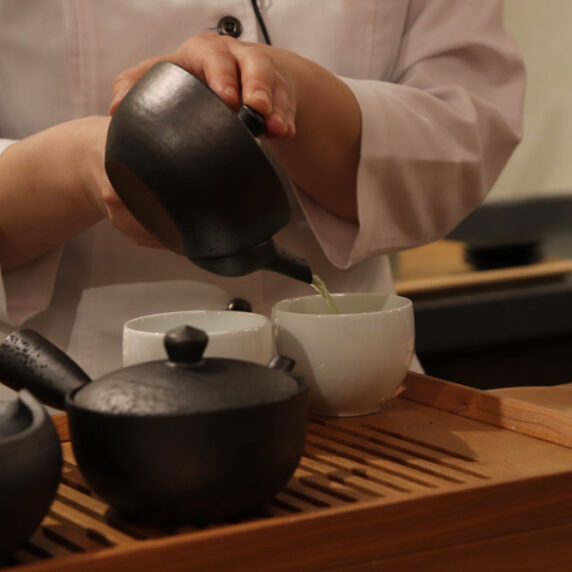
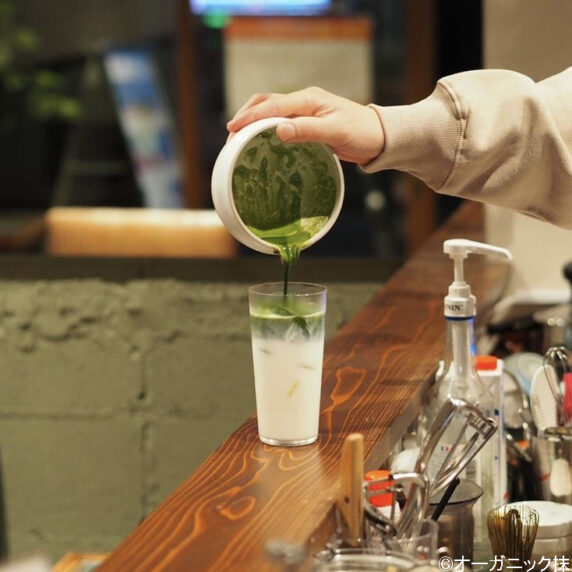




 on the red bar to close the slide.
on the red bar to close the slide. to see the
distance between the current location to the Chaya.
to see the
distance between the current location to the Chaya.